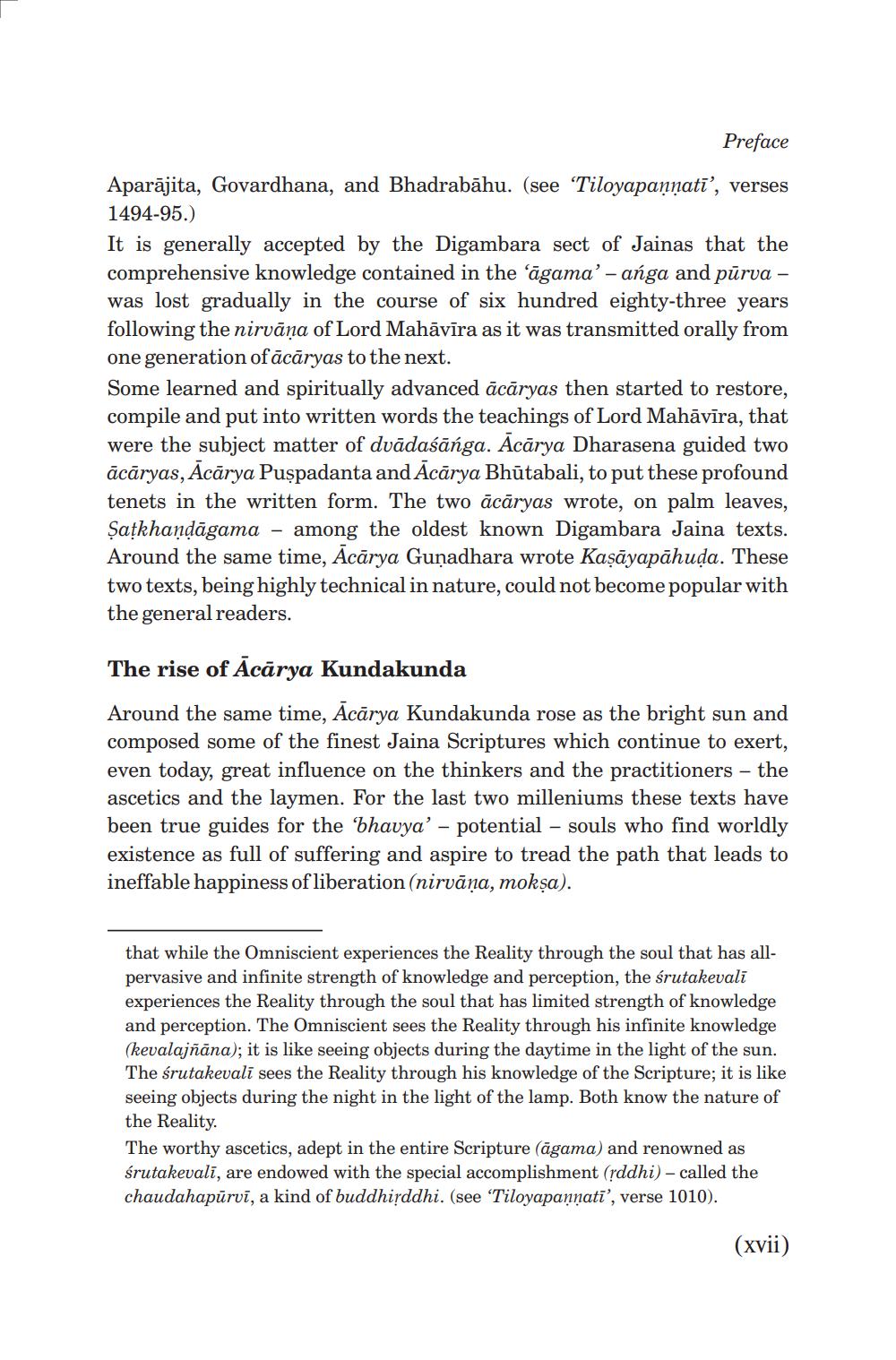________________
Preface
Aparājita, Govardhana, and Bhadrabāhu. (see "Tiloyapannatī', verses 1494-95.) It is generally accepted by the Digambara sect of Jainas that the comprehensive knowledge contained in the fāgama'-anga and pūrva - was lost gradually in the course of six hundred eighty-three years following the nirvana of Lord Mahāvīra as it was transmitted orally from one generation of ācāryas to the next. Some learned and spiritually advanced ācāryas then started to restore, compile and put into written words the teachings of Lord Mahāvīra, that were the subject matter of dvādaśāńga. Ācārya Dharasena guided two ācāryas, Acārya Puşpadanta and Acārya Bhūtabali, to put these profound tenets in the written form. The two ācāryas wrote, on palm leaves, Şațkhandāgama - among the oldest known Digambara Jaina texts. Around the same time, Acārya Gunadhara wrote Kaşāyapāhuda. These two texts, being highly technical in nature, could not become popular with the general readers.
The rise of Ācārya Kundakunda Around the same time, Ācārya Kundakunda rose as the bright sun and composed some of the finest Jaina Scriptures which continue to exert, even today, great influence on the thinkers and the practitioners - the ascetics and the laymen. For the last two milleniums these texts have been true guides for the 'bhavya'- potential - souls who find worldly existence as full of suffering and aspire to tread the path that leads to ineffable happiness of liberation (nirvāṇa, mokşa).
that while the Omniscient experiences the Reality through the soul that has allpervasive and infinite strength of knowledge and perception, the śrutakevali experiences the Reality through the soul that has limited strength of knowledge and perception. The Omniscient sees the Reality through his infinite knowledge (kevalajñāna); it is like seeing objects during the daytime in the light of the sun. The śrutakevali sees the Reality through his knowledge of the Scripture; it is like seeing objects during the night in the light of the lamp. Both know the nature of the Reality. The worthy ascetics, adept in the entire Scripture (agama) and renowned as śrutakevalī, are endowed with the special accomplishment (rddhi) - called the chaudahapūrvī, a kind of buddhirddhi. (see "Tiloyapannati', verse 1010).
(xvii)




